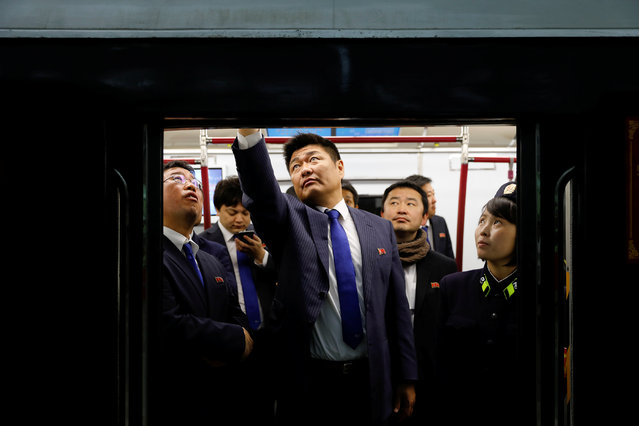
People travel on a train stopping at a subway station visited by foreign reporters in central Pyongyang, North Korea on April 14, 2017. The Pyongyang Metro consists of two lines: the Chollima Line, which runs north from Puhŭng Station on the banks of the Taedong River to Pulgŭnbyŏl Station, and the Hyŏksin Line, which runs from Kwangbok Station in the southwest to Ragwŏn Station in the northeast. The two lines intersect at Chŏnu Station. Daily ridership is estimated to be between 300,000 and 700,000. Construction of the metro network started in 1965, and stations were opened between 1969 and 1972 by former president Kim Il-sung. Most of the 16 public stations were built in the 1970s, except for the two most grandiose stations – Puhoong and Yonggwang, which were constructed in 1987. In 1971, there was a major accident during the construction of a tunnel under the Taedong River for the Ponghwa Station. Some sources say at least 100 workers died in the accident. This particular section of tunnel was never completed; the metro network is now completely located on the western side of the river. China had provided technical aid for the metro's construction, sending experts to install equipment made in China, including electrical equipment made in Xiangtan, Hunan and the escalator with vertical height of 64m made in Shanghai. Pyongyang Metro is among the deepest metros in the world, with the track at over 110 metres (360 ft) deep underground; the metro does not have any above-ground track segments or stations. Due to the depth of the metro and the lack of outside segments, its stations can double as bomb shelters, with blast doors in place at hallways. It takes three and a half minutes from the ground to the platform by escalator. The metro is so deep that the temperature of the platform maintains a constant 18 °C (64 °F) all year. The Saint Petersburg Metro also claims to be the deepest, based on the average depth of all its stations. The Arsenalna station on Kiev Metro's Sviatoshynsko-Brovarska Line is currently the deepest station in the world at 105.5 metres (346 ft). The Porta Alpina railway station in Switzerland was supposed to be 800 m underground, but the project was indefinitely shelved in 2012. The Pyongyang Metro was designed to operate every few minutes. During rush hour, the trains can operate at a minimum interval of two minutes. The trains have the ability to play music and other recordings. The Pyongyang Metro is one of the cheapest in the world to ride, at only five won (about 0.01 USD) per ticket. Instead of paper tickets, the Metro previously used an aluminium token, with the emblem of the Metro minted on it and the Korean “지”. It now uses a paper ticket system, with “지” printed on it. Smoking and eating inside the Metro system is prohibited and is punishable by a large fine. (Photo by Damir Sagolj/Reuters)
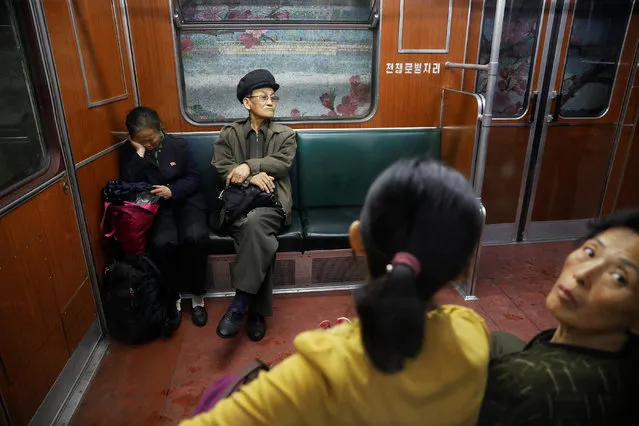
People travel on a train, stopping at a subway station visited by foreign reporters, in central Pyongyang, North Korea on April 14, 2017. (Photo by Damir Sagolj/Reuters)
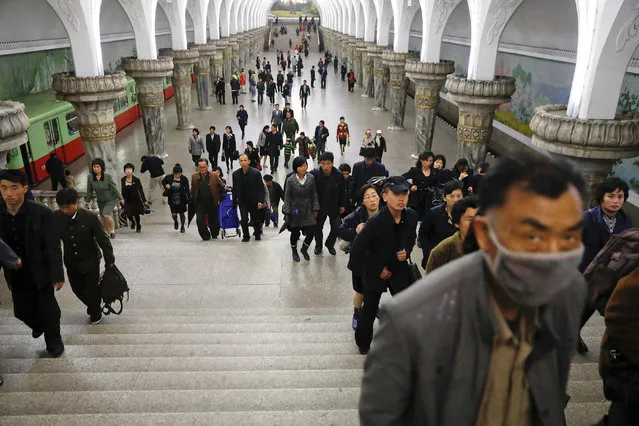
People leave a subway station visited by foreign reporters, in central Pyongyang, North Korea on April 14, 2017. (Photo by Damir Sagolj/Reuters)
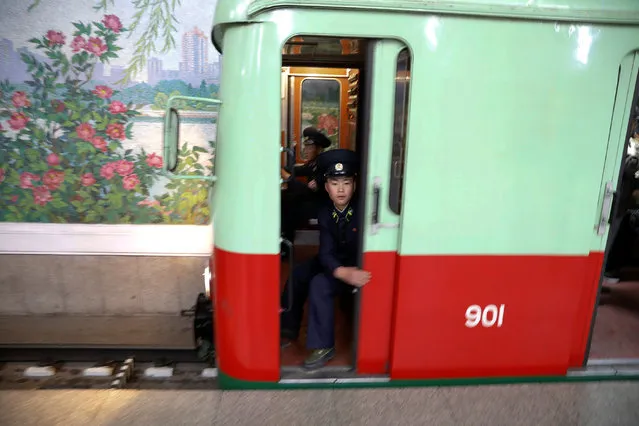
Railway worker closes the door as a train leaves a subway station visited by foreign reporters in central Pyongyang, North Korea on April 14, 2017. (Photo by Damir Sagolj/Reuters)
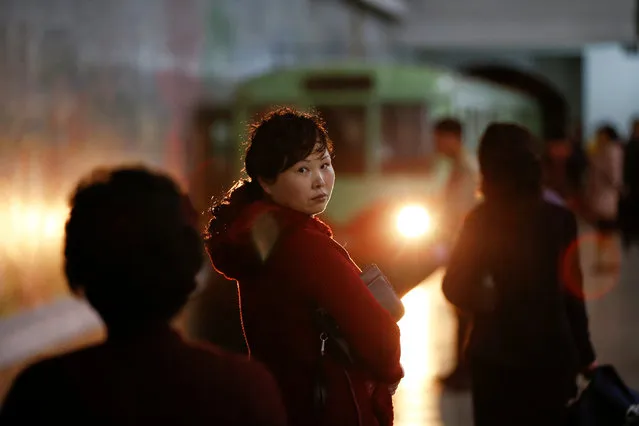
Passengers wait for a train, stopping at a subway station visited by foreign reporters, in central Pyongyang, North Korea on April 14, 2017. (Photo by Damir Sagolj/Reuters)
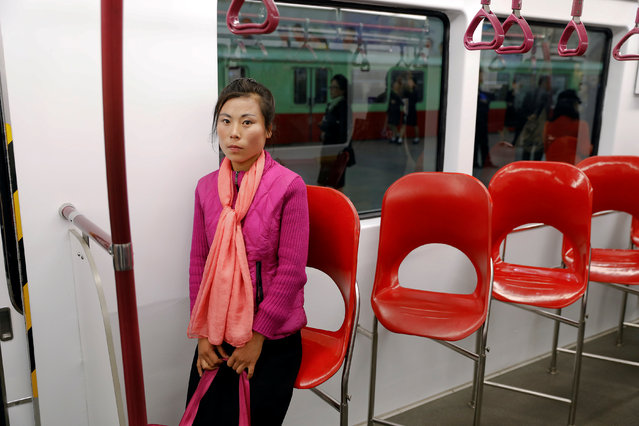
A woman travels on a train stopping at a subway station visited by foreign reporters in central Pyongyang, North Korea on April 14, 2017. (Photo by Damir Sagolj/Reuters)

A railway worker stands by escalators at a subway station visited by foreign reporters, in central Pyongyang, North Korea on April 14, 2017. (Photo by Damir Sagolj/Reuters)
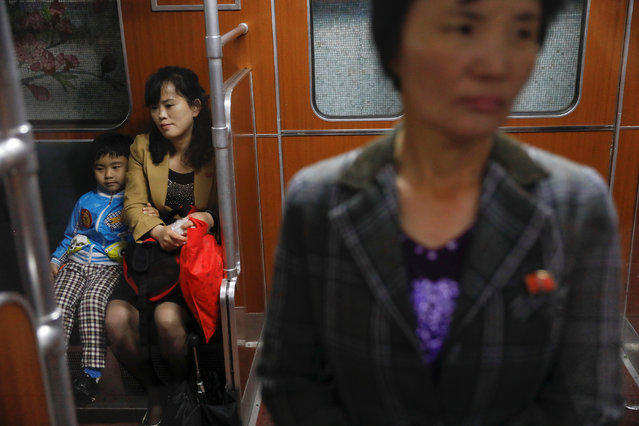
People travel on a train, stopping at a subway station visited by foreign reporters, in central Pyongyang, North Korea on April 14, 2017. (Photo by Damir Sagolj/Reuters)
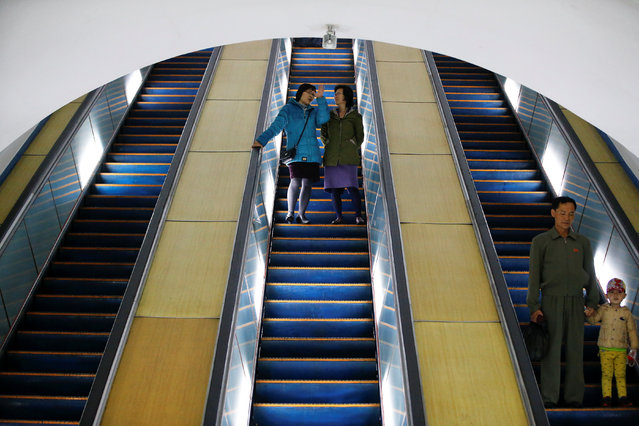
People travel on escalators to enter a subway station in central Pyongyang, North Korea on April 14, 2017. (Photo by Damir Sagolj/Reuters)
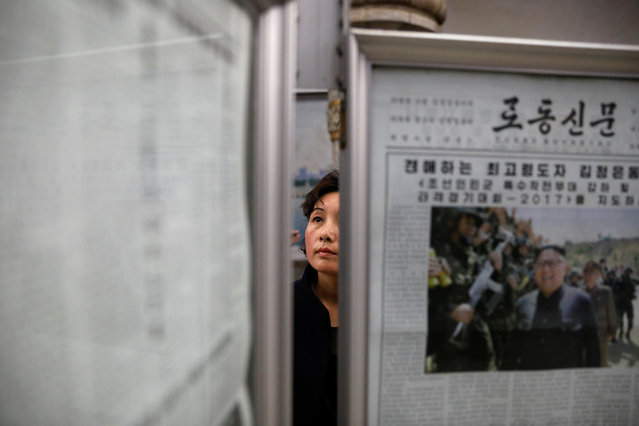
A woman reads newspapers displayed at a subway station visited by foreign reporters, in central Pyongyang, North Korea on April 14, 2017. (Photo by Damir Sagolj/Reuters)
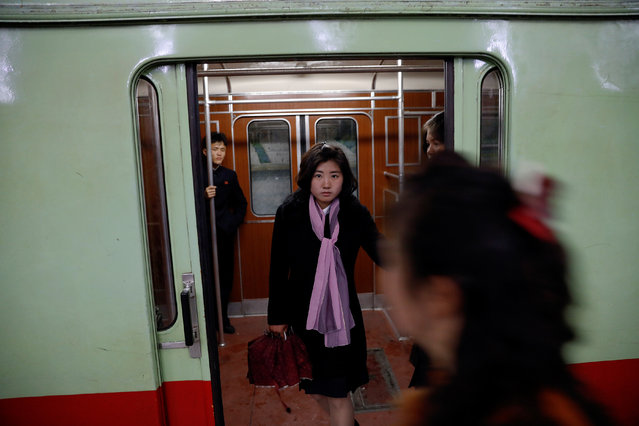
People travel on a train stopping at a subway station visited by foreign reporters, in central Pyongyang, North Korea on April 14, 2017. (Photo by Damir Sagolj/Reuters)
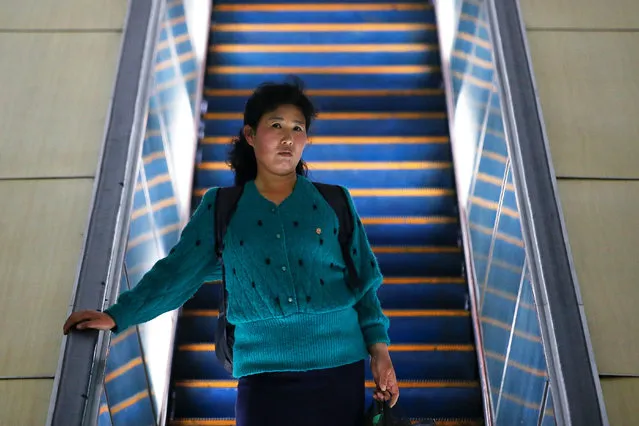
A woman travels on an escalator to enter a subway station in central Pyongyang, North Korea on April 14, 2017. (Photo by Damir Sagolj/Reuters)
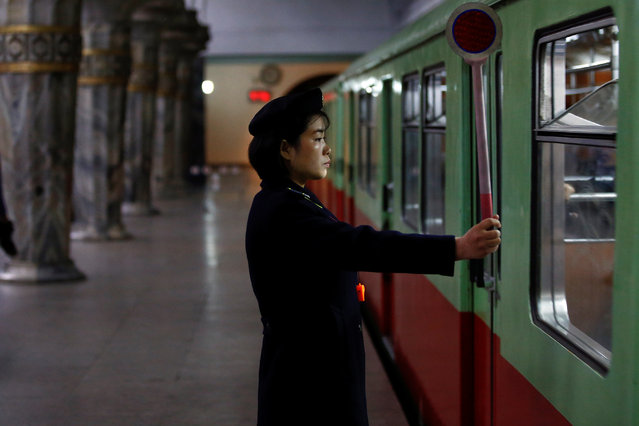
A railway worker gives a signal as the train leaves a subway station visited by foreign reporters in central Pyongyang, North Korea on April 14, 2017. (Photo by Damir Sagolj/Reuters)
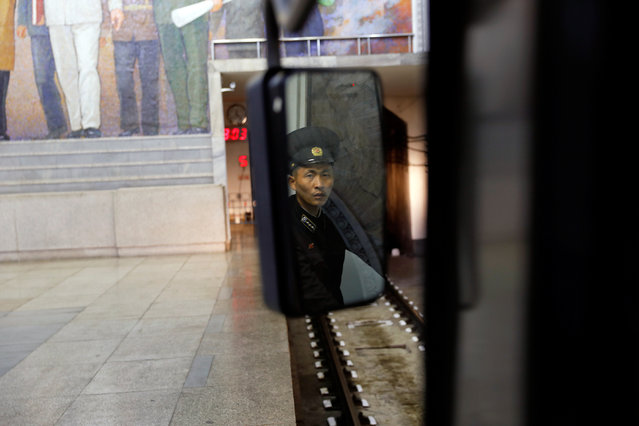
A railway worker is reflected in a mirror as a train leaves a subway station visited by foreign reporters in central Pyongyang, North Korea on April 14, 2017. (Photo by Damir Sagolj/Reuters)
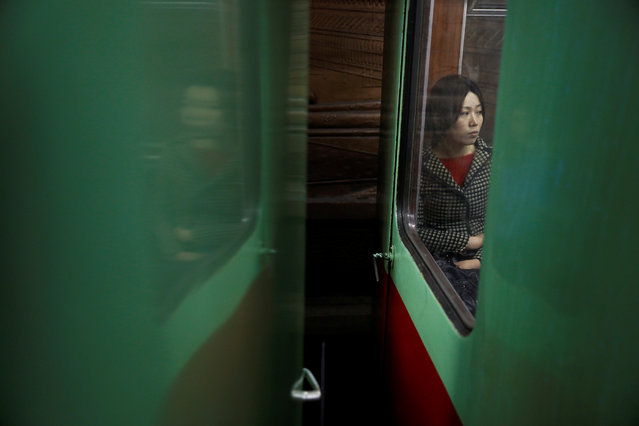
A woman travels on subway in central Pyongyang, North Korea on April 14, 2017. (Photo by Damir Sagolj/Reuters)
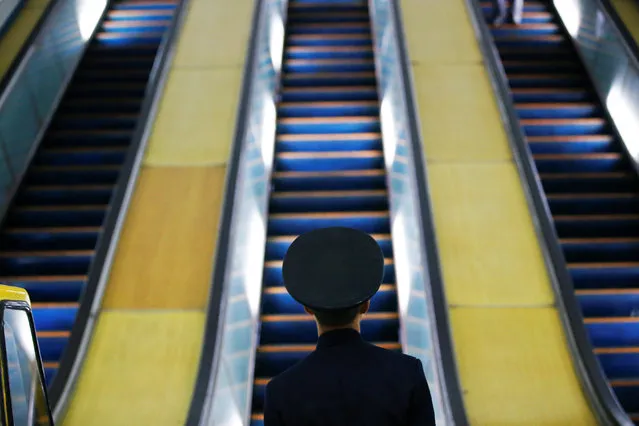
A railway worker stands in front of escalators at a subway station visited by foreign reporters in central Pyongyang, North Korea on April 14, 2017. (Photo by Damir Sagolj/Reuters)
20 Apr 2017 08:59:00,
post received
0 comments
